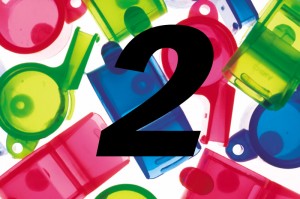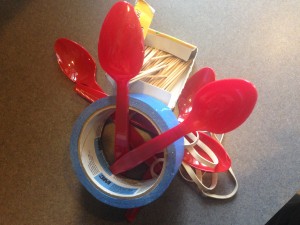R U an ETC? U R not alone, Part 2
 Last week I shared a list of ideas that came out of a recent collaborative OK2Ask® session. The participants, all edtech coaches or teachers who play a less formal “coach” type role with their peers, chose the top challenges from a longer list of possibilities and then shared ideas they have used or hope to use to meet those challenges. You can see a recording of the full session here (uses Adobe Connect). This post shares part 2 of their explanations and solutions, saving you the time of watching a recording. Like all of us, you probably value the timesaving “executive summary.” Again, I offer only initials ( and state abbreviation the first time they contribute) to respect our participants’ privacy.
Last week I shared a list of ideas that came out of a recent collaborative OK2Ask® session. The participants, all edtech coaches or teachers who play a less formal “coach” type role with their peers, chose the top challenges from a longer list of possibilities and then shared ideas they have used or hope to use to meet those challenges. You can see a recording of the full session here (uses Adobe Connect). This post shares part 2 of their explanations and solutions, saving you the time of watching a recording. Like all of us, you probably value the timesaving “executive summary.” Again, I offer only initials ( and state abbreviation the first time they contribute) to respect our participants’ privacy.
Challenge: Promoting tech for LEARNING, not tech for tech sake
CD (OR): you really have to model this for teachers.
DS (IN): With kids, you introduce technology and they FREELY explore. I help the teachers by having them watch me explore with their kids.
SR (NY): I want to ban the word tech and replace it with tools. We all use tools everyday in our lives, I want to be able to have all the teachers feel comfortable with these new tools.
RP (AZ): Ask them (teachers) “What are you going to do with that?”
NA (FL): I break down tech into teacher tools vs. student use for enhancing learning.
JZ (PA): I try to make sure what I do in computer class is connected to what they [students] are doing in some area of their curriculum, not just a “computer” assignment.
MB (UT): I get the kids hooked on the tools, then ask them how their teacher could use this tool.
JS (SC): Ask [teachers] why the “tool” is being used.
KB (PA): The pedagogy should drive the integration, not the technology. Eliminate the tool first approach.
LD (OR): It makes more sense to use tech within the subjects in the curriculum.
CD: I also think it is important that teachers are confident with the materials that they need to teach. If they are trying to master their curriculum and use new tools, that can be just too much for them.
KB: Provide choices, selection.
MB: I used [a certain tool] with sixth graders last week, and they had a ton of ways they can use it in the classroom with their teacher. Luckily the teacher was listening 
RP: Have follow up sessions where they [teachers] share how they used the new tools.
NA: Try teaching a tech elective [to students] using project based learning to showcase ways they can use technology in every core class they take.
JS: Spend several weeks of instruction on a tool — that gives teachers a better feeling about using the tool.
Challenge: Coaching during other major initiatives, such as implementation of Common Core State Standards (CCSS)
SR: This year has been very tough our teachers learning the common core.
Find ways to make technology help with that initiative so teachers can “kill two birds with one stone” as they adjust to the new initiative.
MH (PA): Digital writing is part of CCSS, so that helps.
Stephanie Ryall: Yes I think the common core will ultimately or already has created more use of the smartboards in our school because of the format the lesson are provided in NY. [helps teachers envision how they can be successful with both because the lesson plan shows them]
KB: Provide a pyramid approach for tools. One tool per year and it builds. In the intermediate/secondary grades the students have an arsenal to choose.
LG (MA): Most teachers are apt to use what they know.
AQ (OR): Sometimes if a teacher can see the tool in action by observing another teacher use it in class or by having it modeled in their own class, they are more willing to give if a try.
CD: I think we also need to ask them what they would want to use if “it was easy”. Then you can backwards map it and teach them the skills they need.
Other CHALLENGES and ideas to motivate teachers
JZ: It is really important to be sure the technology works when teachers try to use it – a problem or 2 can turn teachers off from trying again.
Solutions:
MB: Modeling a lesson in the classroom first, then being there for back up when they are teaching.
Offer incentives and motivators:
CD: Teaching them all the ways to Google. It blows their mind when they learn that all the information they want is there, if they know how to ask Google for it.
DS: A silly thing that I did was put a big smiley poster outside a teacher’s room that said “She did it” after someone met one of my challenges. Then, the kids would ask them why they got the smiley face. The teacher usually beams as she tells her class.
KB: You could also use ClassDojo, a popular management app, to give your teachers “tech” feedback. You can customize the behaviors. It sends emails, too.
SR: I have an idea for the teachers. If they will Facetime with me I will answer their questions!!
Have competitions by hallway, department, or building. Who can have the greatest number of teachers implementing (insert teaching initiative here) using technology? Prizes? Food or release time or ??
MH: Funny how food works – lol
SR: chocolate
KB: You can buy chocolate computers or mouses online as fun tech gifts
What do ETCs WISH for?
We created a Padlet wishlist from this session, and it is open for further contributions by edtech coaches by ANY title: http://padlet.com/wall/29gq78x0vw
Join the conversation
Please feel free to comment here with your own edtech coach challenge/solution. I also invite everyone to join the ISTE SIGETC for our “Last Tuesday” Twitter chats. Simpy set up a search for the #SIGETC hashtag! The next one is coming up January 28 at 1 pm EST. See the full schedule and transcripts here. Everyone is welcome, whether you are an ISTE member or not.











